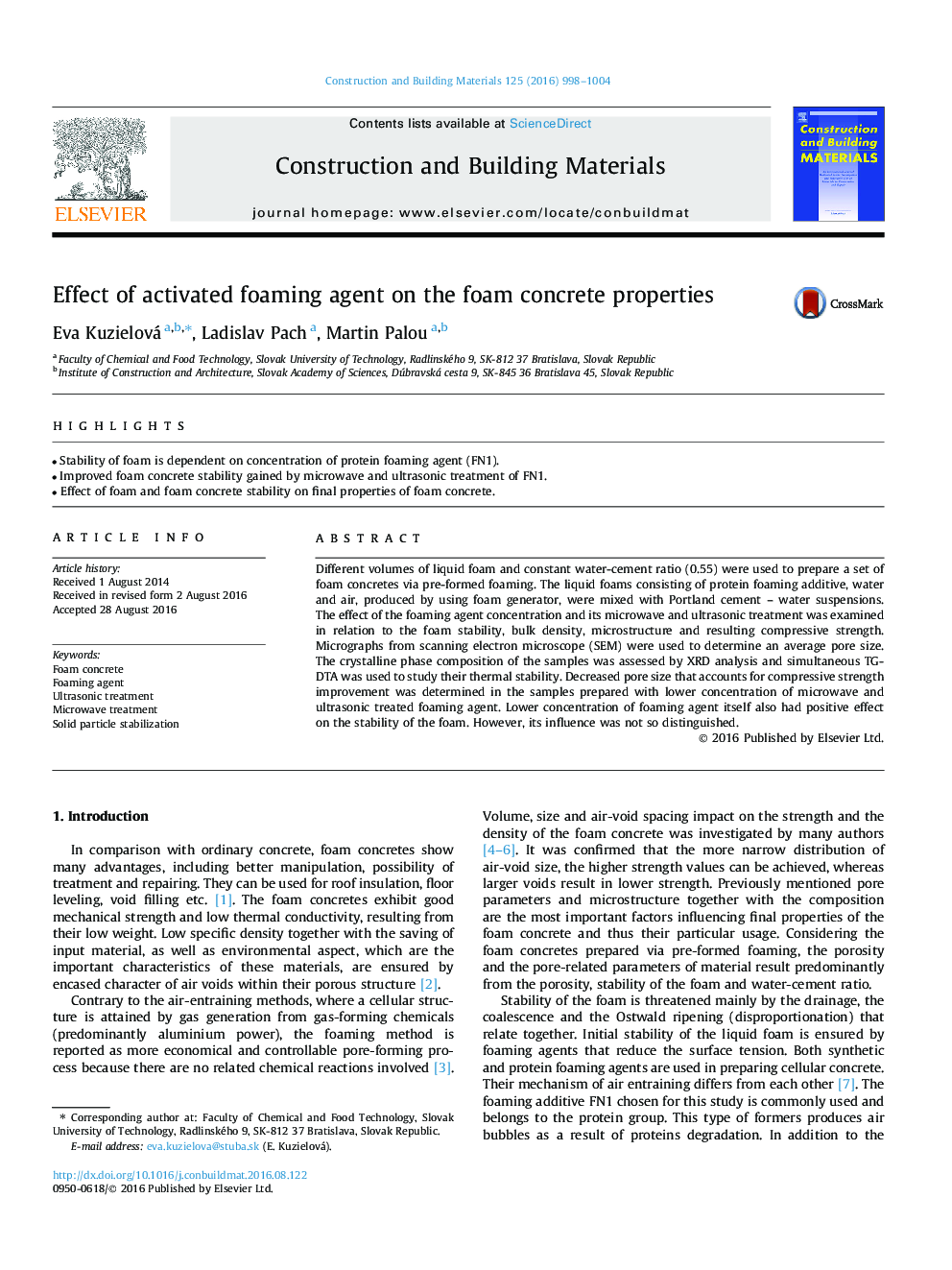| Article ID | Journal | Published Year | Pages | File Type |
|---|---|---|---|---|
| 4918688 | Construction and Building Materials | 2016 | 7 Pages |
Abstract
Different volumes of liquid foam and constant water-cement ratio (0.55) were used to prepare a set of foam concretes via pre-formed foaming. The liquid foams consisting of protein foaming additive, water and air, produced by using foam generator, were mixed with Portland cement - water suspensions. The effect of the foaming agent concentration and its microwave and ultrasonic treatment was examined in relation to the foam stability, bulk density, microstructure and resulting compressive strength. Micrographs from scanning electron microscope (SEM) were used to determine an average pore size. The crystalline phase composition of the samples was assessed by XRD analysis and simultaneous TG-DTA was used to study their thermal stability. Decreased pore size that accounts for compressive strength improvement was determined in the samples prepared with lower concentration of microwave and ultrasonic treated foaming agent. Lower concentration of foaming agent itself also had positive effect on the stability of the foam. However, its influence was not so distinguished.
Related Topics
Physical Sciences and Engineering
Engineering
Civil and Structural Engineering
Authors
Eva Kuzielová, Ladislav Pach, Martin Palou,
